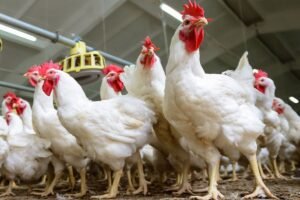Biofilms in Poultry Drinking Water Systems
Biofilms in Poultry Drinking Water Systems: Effects and Management Methods
An Important Topic on Infection Mechanisms in Poultry

Dr. Majid Hamid Al-Sayegh / Australia
Biofilms are organized microbial communities embedded in an external polymeric matrix secreted by microorganisms and adhering to surfaces, including the internal surfaces of poultry drinking water systems. These biofilms represent a significant challenge to biosecurity and flock health in the poultry industry worldwide. In poultry farms, factors such as water temperature, organic matter accumulation, and irregular water flow contribute to the formation of biofilms on pipes, drinking points, and tanks. Recent studies (2025) using 16S rRNA gene sequencing and quantitative PCR methods have shown that these biofilms contain a mixture of opportunistic and pathogenic bacteria such as Escherichia coli, Salmonella, Pseudomonas aeruginosa, and even Campylobacter.
Biofilms act as persistent reservoirs for pathogens, leading to chronic infections without apparent symptoms and negatively impacting herd performance. More importantly, they facilitate the transfer of antibiotic resistance (AMR) genes such as blaNDM and mcr-3 between bacteria, making them a hidden threat within the One Health framework. Research has confirmed that medications administered via drinking water (such as antibiotics, vaccines, or electrolytes) may lose their effectiveness due to absorption within the biofilm matrix, leading to insufficient dosages and treatment failure.

Methods for detecting biofilms include microbial cultures, microplate tests to assess biofilm formation, and molecular tools such as quantitative PCR. Recent innovations for combating biofilms include ultrasonic devices, sterilization with organic acids, and the use of disinfectants such as chlorine dioxide or peracetic acid. Organic acid formulations (such as KEM SAN®) have also shown promising efficacy. Regular flushing, descaling, and redesigning pipes to reduce stagnant areas are essential preventive strategies.
From a public health perspective, contaminated water lines can be a source of zoonotic diseases (transmitted from animals to humans) and contribute to the entry of resistant bacteria into the food chain. Therefore, improving water hygiene is not just a farm-level issue; it is a global food safety priority.



